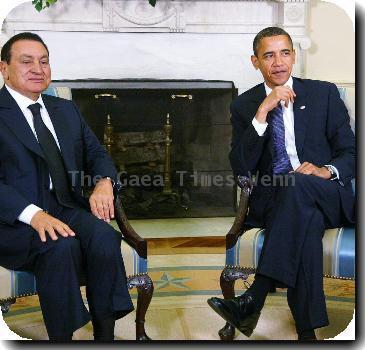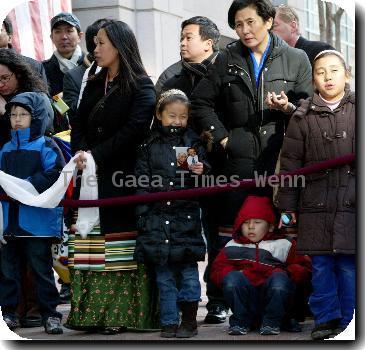Ash cloud from Icelandic volcano disrupts air traffic across Europe, shuts down Heathrow
By Robert Barr, APThursday, April 15, 2010
Iceland’s volcanic ash halts flights across Europe
LONDON — An enormous ash cloud from a remote Icelandic volcano caused the biggest flight disruption since the 2001 terrorist attacks as it drifted over northern Europe and stranded travelers on six continents. Officials said it could take days for the skies to become safe again in one of aviation’s most congested areas.
The cloud, floating miles (kilometers) above Earth and capable of knocking out jet engines, wrecked travel plans for tens of thousands of people Thursday, from tourists and business travelers to politicians and royals. They couldn’t see the source of their frustration — except indirectly, when the ash created vivid red and lavender sunsets.
Non-emergency flights in Britain were canceled, and most will stay grounded until at least midday Friday.
Authorities in Ireland, Denmark, Norway, Sweden, Finland and Belgium also closed their air space. France shut down 24 airports, including the main hub of Charles de Gaulle in Paris, Germany’s Berlin and Hamburg were shut Thursday evening, and several flights out of the U.S. had to double back.
Kyla Evans, spokeswoman for air traffic service Eurocontrol, said half of all trans-Atlantic flights were expected to be canceled Friday.
At London’s Heathrow airport, normally one of the world’s busiest with more than 1,200 flights and 180,000 travelers a day, passengers stared forlornly at departure boards on which every flight was listed as canceled.
“We made it all the way to takeoff on the plane. … They even showed us the safety video,” said Sarah Davis, 29, a physiotherapist from Portsmouth in southern England who was hoping to fly to Los Angeles. “I’m upset. I only get so much vacation.”
A volcano beneath Iceland’s Eyjafjallajokull (ay-yah-FYAH’-plah-yer-kuh-duhl) glacier began erupting Wednesday for the second time in less than a month, triggering floods and shooting smoke and steam miles into the air. Video showed spectacular images of hot gases melting the thick ice, sending cascades of water thundering down the steep slopes of the volcano.
About 700 people from rural areas near the volcano were evacuated Thursday because of flash flooding, as water carrying icebergs the size of small houses rushed down the mountain. Most evacuees were allowed to return home after the floods subsided, but more flash floods are expected as long as the volcano keeps erupting, said Rognvaldur Olafsson of the Civil Protection Department.
The ash cloud became a menace to air travel as it drifted south and east toward northern Europe — including Britain, about 1,200 miles (2,000 kilometers) away.
The ash plume drifted at between 20,000 feet and 36,000 feet (6,000 meters and 11,000 meters), where it could get sucked into airplane engines and cause them to shut down. The smoke and ash also could affect aircraft visibility.
Britain’s air traffic service said early Friday it was extending a ban on most air traffic until 7 p.m. local time Friday, but flights to Scotland and Northern Ireland, and North Atlantic flights to and from Glasgow, Prestwick and Belfast airports may be allowed until 1 p.m. local time.
The agency said Britain had not halted all flights in its space in living memory, although many were grounded after the Sept. 11, 2001, terrorist attacks in the United States.
“People can’t remember a time when it has been on this scale,” said Patrick Horwood of the air traffic service. “Certainly never involving a volcano.”
Eurocontrol spokeswoman Evans said the ash had led to the cancellation of about 4,000 flights within Europe Thursday, and that could rise to 6,000 Friday.
Several U.S. flights bound for Heathrow, including those from Chicago, San Francisco, Denver, Las Vegas and New York, had to return to their departure cities or land elsewhere when London airports were closed. Canadian airlines also canceled some Europe-bound flights.
In Washington, the Federal Aviation Administration said it was working with airlines to try to reroute some flights around the huge ash cloud, which is hundreds of miles wide. Flights from Asia, Africa, South America, Australia and the Middle East to Heathrow and other top European hubs were also put on hold.
Australia’s Qantas airline said it had some 1,700 passengers grounded Friday from five flights — about 1,000 passengers stranded in Singapore, and 350 each in Hong Kong and Bangkok.
Singapore Airlines canceled seven flights to Europe.
New Zealand’s national carrier Air New Zealand warned travelers flying to Europe to defer their plans Friday, as it canceled two flights through London and diverted a third to Germany.
Fifteen flights between Hong Kong and Europe were canceled on Friday and seven were delayed, the southern Chinese territory’s Airport Authority said. Hong Kong carrier Cathay Pacific and British Airways canceled their flights.
Malaysia Airlines said that its flights from Kuala Lumpur to Paris, London and Amsterdam on Thursday and Friday were all postponed to Saturday and Sunday respectively, leaving hundreds stranded. A Kuala Lumpur-London flight that took off Thursday was diverted to Frankfurt.
Japan Airlines said it canceled nine flights to Europe on Friday with 2,300 passengers. All Nippon Airways Co. said six flights were canceled, affecting 1,582 passengers. In Seoul, 12 flights were canceled, and two flights en route to Europe were forced to turn around.
In Britain, the closures curtailed some campaigning for the May 6 national election. Monarchs from Norway and the Netherlands traveling to a 70th birthday celebration for Denmark’s Queen Margrethe found their plans up in the air.
Swedish Foreign Minister Carl Bildt resorted to driving home to Sweden from Brussels. “We’ll arrive sometime tomorrow,” his spokeswoman Irena Busic said.
Eurostar train services to France and Belgium and Channel ferries were packed as travelers sought ways out of Britain. P&O ferries said it had booked a passenger on its Dover-Calais route who was trying to get to Beijing — he hoped to fly from Paris instead of London.
It was unclear whether the ash cloud would affect the arrival of President Barack Obama and other world leaders planning to attend the state funeral Sunday of Polish President Lech Kaczynski, who died in a plane crash. Polish authorities banned flights over part of northwestern Poland late Thursday, the country’s PAP news agency reported. The funeral is to be held in Krakow, in southeastern Poland.
The Icelandic plume lies above the Atlantic Ocean close to the flight paths for most routes from the U.S. East Coast to Europe, and over northern Europe itself.
Meteorologists from the AccuWeather forecasting service in the U.S. said the current ash plume will threaten air travel over Europe through Sunday at the least. Einar Kjartansson, a geophysicist at the Icelandic Meteorological Office, said the problem might persist for weeks, depending on how much wind carries the ash.
Explosive volcanic eruptions inject large amounts of highly abrasive ash — essentially very small rock fragments — into the upper atmosphere, the cruising altitude of most jet airliners. It can cause significant damage to both airframes and engines.
Health protection officials in Britain said some of the ash will fall to ground level overnight — starting in Scotland before moving south — although Britain’s weather forecasters said the public should not be concerned.
The U.S. Geological Survey said about 100 aircraft have run into volcanic ash from 1983 to 2000. In some cases engines shut down briefly after sucking in volcanic debris, but there have been no fatal incidents.
In 1989, a KLM Royal Dutch Airlines Boeing 747 flew into an ash cloud from Alaska’s Redoubt volcano and lost all power, dropping from 25,000 feet to 12,000 feet (7,500 meters to 3,600) before the crew could get the engines restarted. The plane landed safely.
In another incident in the 1980s, a British Airways 747 flew into a dust cloud and the grit sandblasted the windscreen. The pilot had to stand and look out a side window to land safely.
Gideon Ewers, spokesman for the International Federation of Airline Pilots Associations, attributed the extent of the disruption to amount of air traffic in the area where the plume was drifting.
“Normally, these volcanic eruptions affect air travel in areas of thin traffic such as the Aleutian islands in Alaska, or in Indonesia and the Philippines,” he said.
Ironically, Iceland’s Keflavik airport remained open Thursday. Flights to Europe were canceled but those to North America were operating normally.
Iceland, a nation of 320,000 people, sits on a large volcanic hot spot in the Atlantic’s mid-oceanic ridge, and has a history of devastating eruptions.
AP reporters Robert Barr, Jennifer Quinn, Paisley Dodds, Danica Kirka and Chonel LaPorte in London, Slobodan Lekic in Kabul, Ian MacDougall in Oslo, Louise Nordstrom in Stockholm, Shawn Pogatchnik in Dublin, Jan Olsen in Copenhagen, Gretchen Mahan in Brussels, Mike Corder in Amsterdam, Adam Schreck in Dubai, Bradley Klapper and Frank Jordans in Geneva and Matti Huuhtanen in Helsinki contributed to this report.
__
On the Net:
www.metoffice.gov.uk/corporate/pressoffice/2010/volcano.html
Tags: Air Travel, Air Travel Disruptions, Arts And Entertainment, Asia, Barack Obama, Belgium, Brussels, Celebrity, China, Copenhagen, Denmark, East Asia, Eastern Europe, England, Europe, France, Greater China, Hong Kong, Iceland, Iceland-volcano, Ireland, Kuala Lumpur, London, Malaysia, Netherlands, North America, Norway, Paris, Poland, Reykjavik, Scotland, Southeast Asia, Sweden, Transportation, United Kingdom, United States, Volcano, Western Europe












